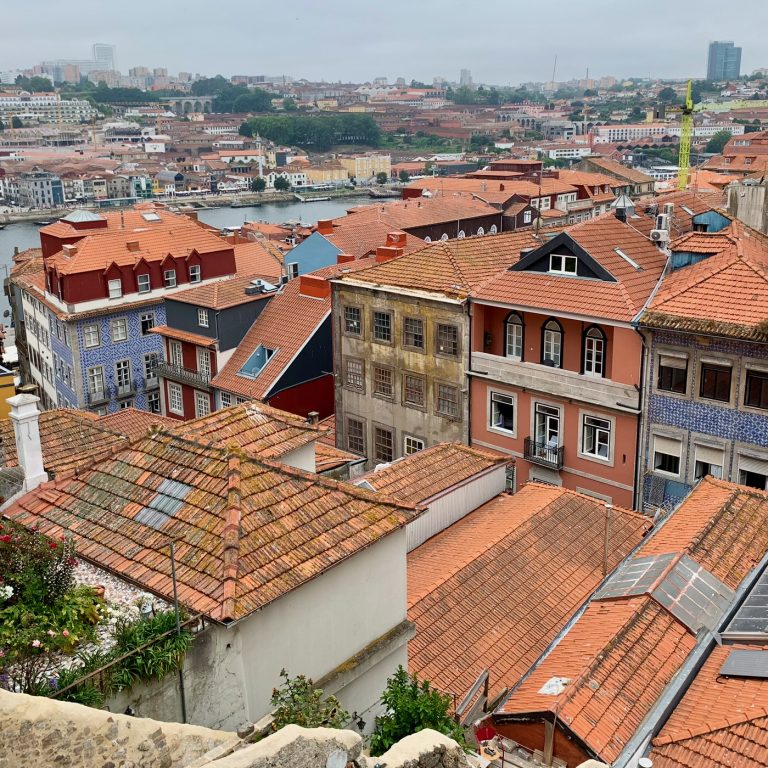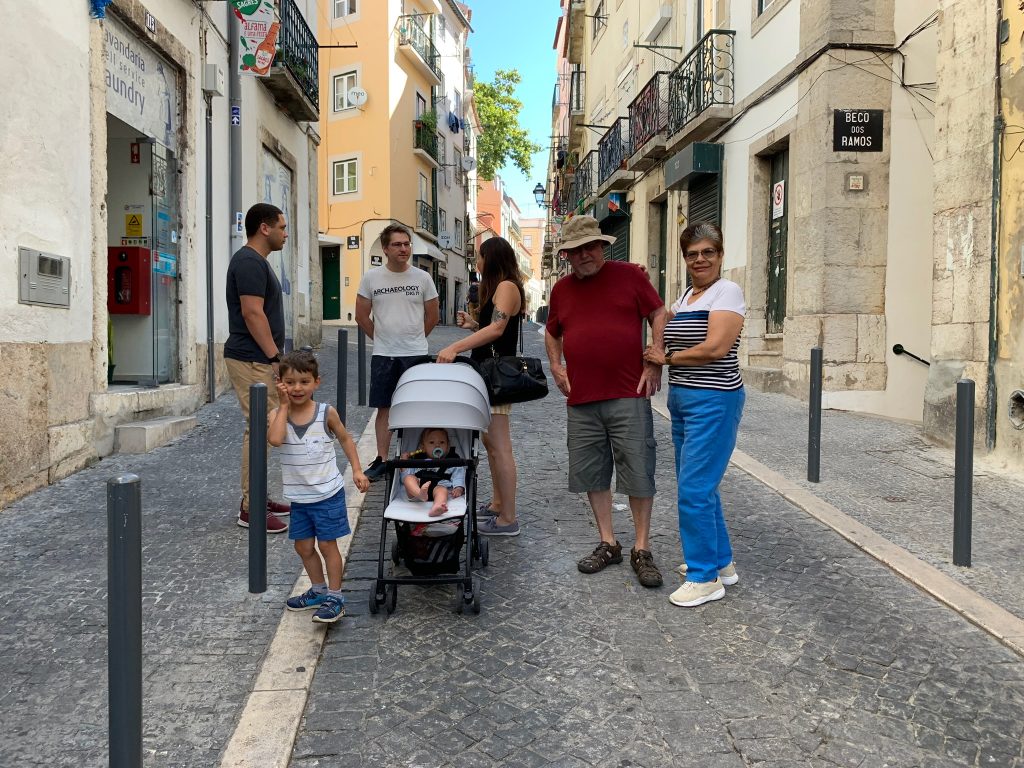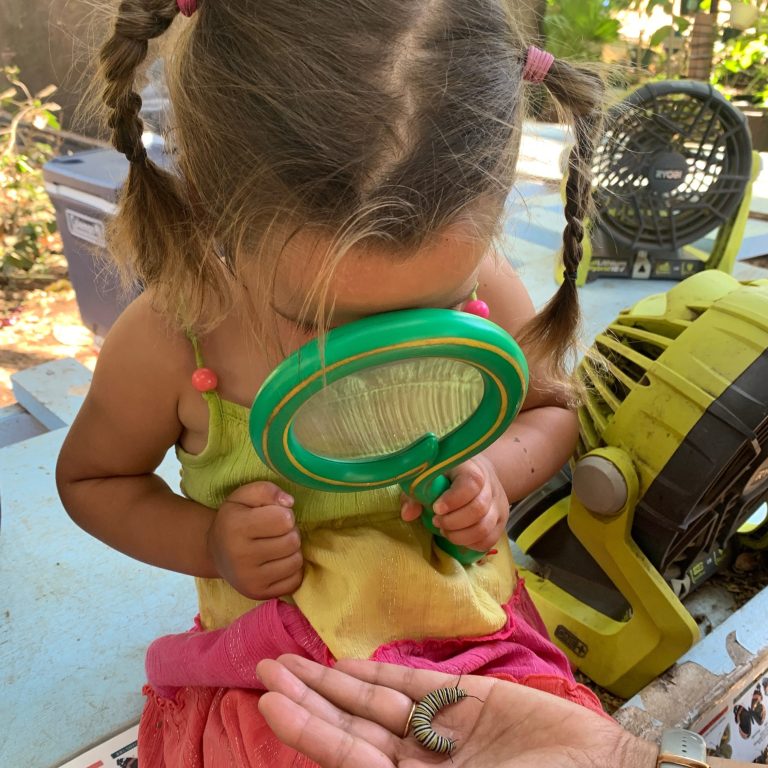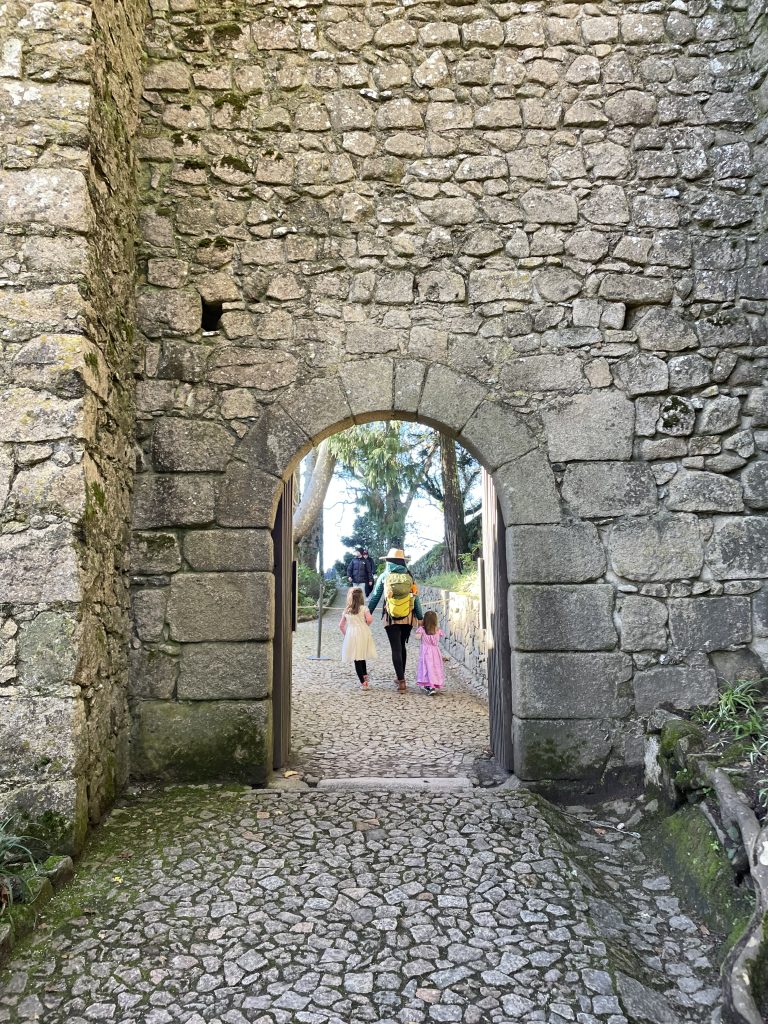Porto was our first stop on a 10-day Portugal trip with our beautiful mixed-race family with kids. It was the perfect place to begin our trip because it offered a chance to relax, find kid-friendly activities, and adjust to the time change.
Porto is the second largest city in Portugal, and one of the oldest city centers in Europe, serving as a port city for the Roman Empire. It is known for Port wine, cobblestone streets, and beautiful old buildings. It feels like you’re walking through history as you meander through the city. Since our multi-family trip had to suit the age range of the group (infant to elder), we had a lot of planning to do. Below are our favorite must-do things in the beautiful city of Porto with your extended family.
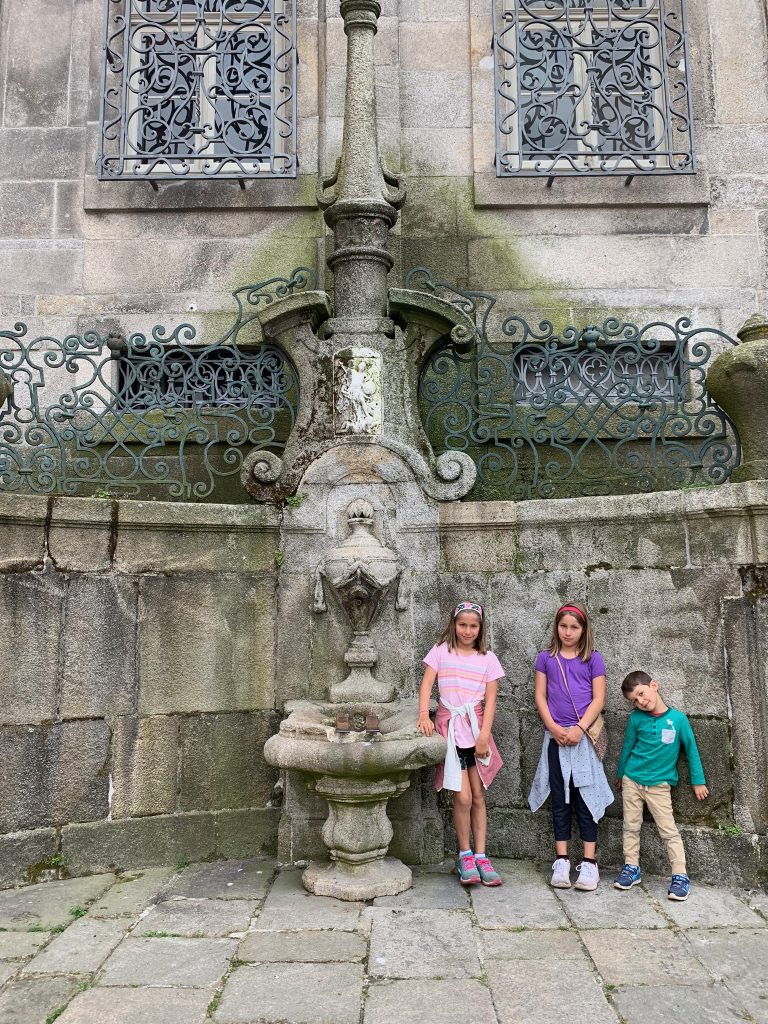
Tips for the trip
Plan a few days to adjust to the time change.
Many buildings have beautiful tile floors that are slippery for little or older feet.
- Cobblestone roads are horrible for strollers and for anyone who uses a cane.
- Are you chestfeeding? There are plenty of places to stop and nurse, and locals seem totally cool with it. Click here for our nursing essentials while traveling.
- Be prepared to adjust to the local eating schedule. We found that this usually meant eating dinner later than we do at home to accommodate for the larger lunch that is more typical. For the little ones this just means carry snacks and be prepared to hit up those little markets and cafes for extra fuel. Be aware that some restaurants close during the hours between lunch and dinner. Touristy areas will cater to the eating routines of non-locals, but that may not be the case if you leave the big cities.
- Getting Around: We rented a car. Lyft was easy to get in most places around the city. We also caught a train to Lisbon.
What we packed
- Standard diaper bag essentials
- Airplane essentials for kids
- Bug spray – most places do not have screens on their windows as mosquitos can be a problem
- Baby carrier, stroller, or hiking backpack
- Grippy shoes or socks for slippery tile floors
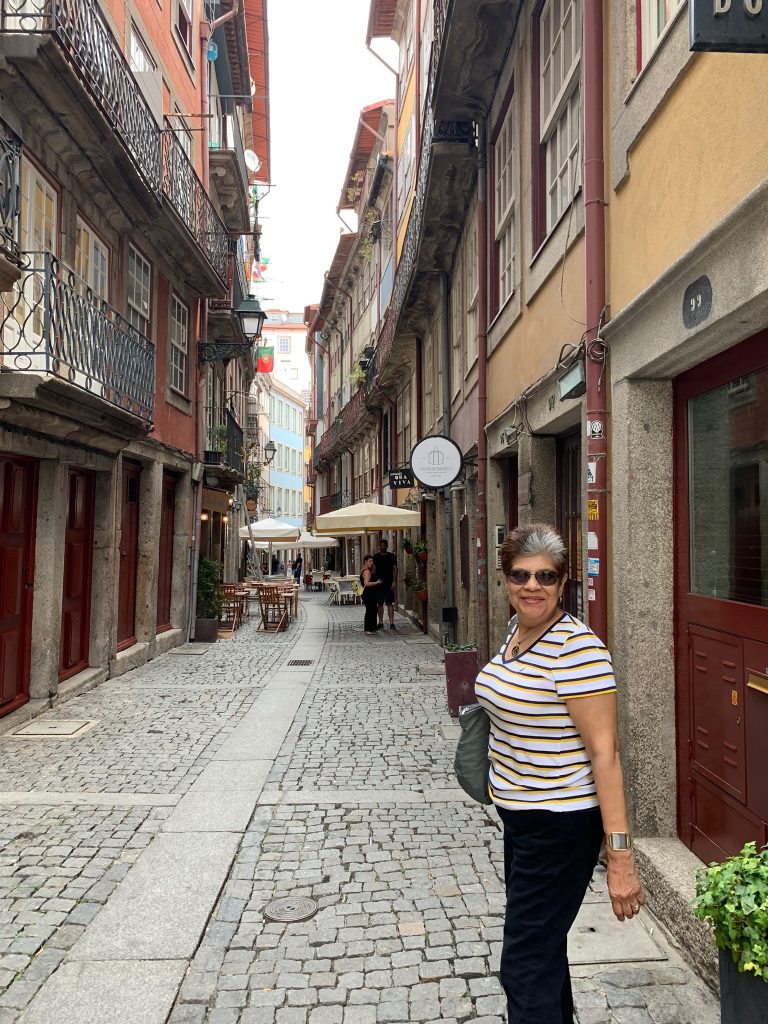
4 things to do in Porto with your Kids
Porto Cathedral is one of the more sought-after sites in Porto and it did not disappoint. One of my daughters really loves old, ornate churches because they are not something you see often where we live. I loved the tile and architecture. We had fun skipping around the inner courtyard.
Entrance to the cathedral is free. It costs €3 (free for kids under 10 years of age) to go into the cloister, which was absolutely worth it!
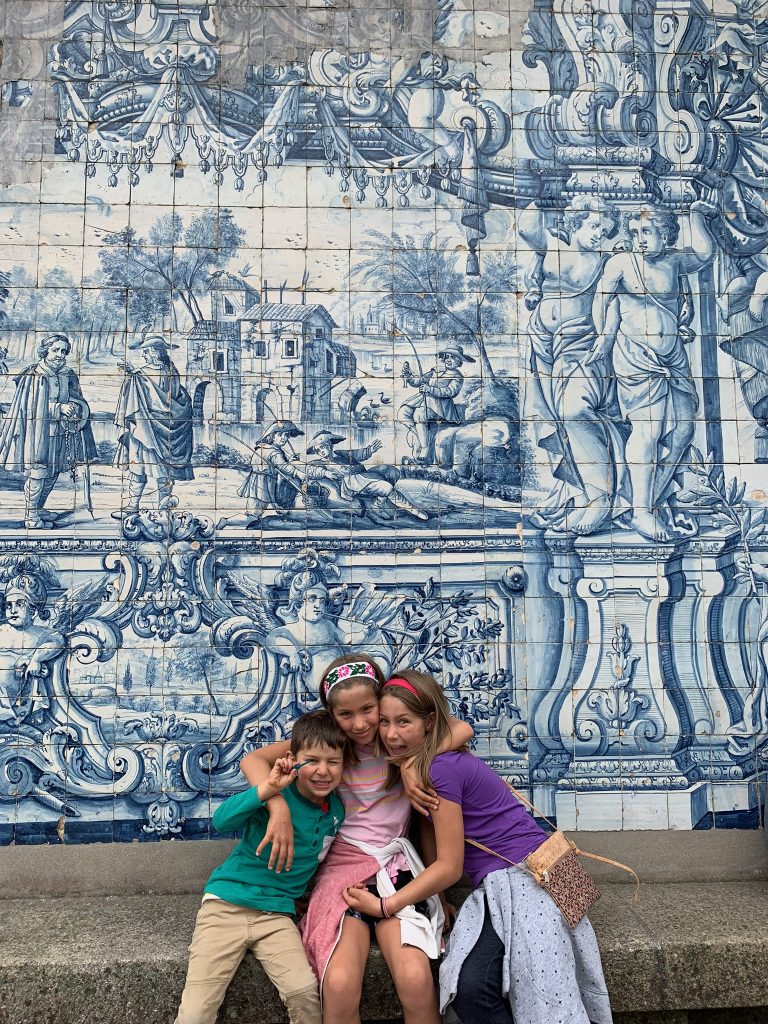
Directly next to the Porto Cathedral, you’ll find the historic Bishop’s Palace, a World UNESCO Heritage site built in the 12th-13th centuries. Tickets are €5.
I really enjoyed this palace because it had beautiful things to look at and it had so few tourists! Because of this, or because we looked like an unruly group, a staff member walked with us giving us a free tour of the palace and the objects within.
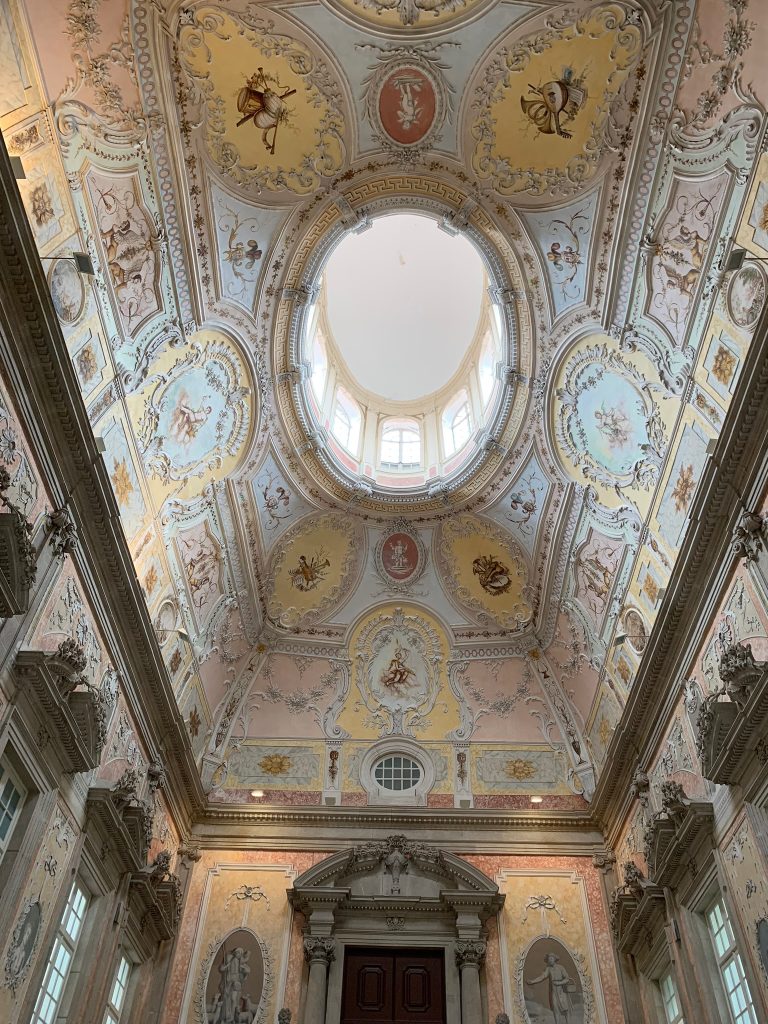
This massive, double-decker bridge connects Porto to the neighboring city south, Villa Nova de Gaia, over the Douro River. Although we walked across it on a very windy day, it still was the perfect first day activity. The views were fabulous!
Along the water on both sides are many restaurants with outdoor dining and souvenir shops. We stopped here for our first meal/snack. We noticed that many restaurants we ate at had a fruit platter or fruit bowl option that was perfect for the kids. Of course the light beer and white wine was a welcome treat for the adults, too.
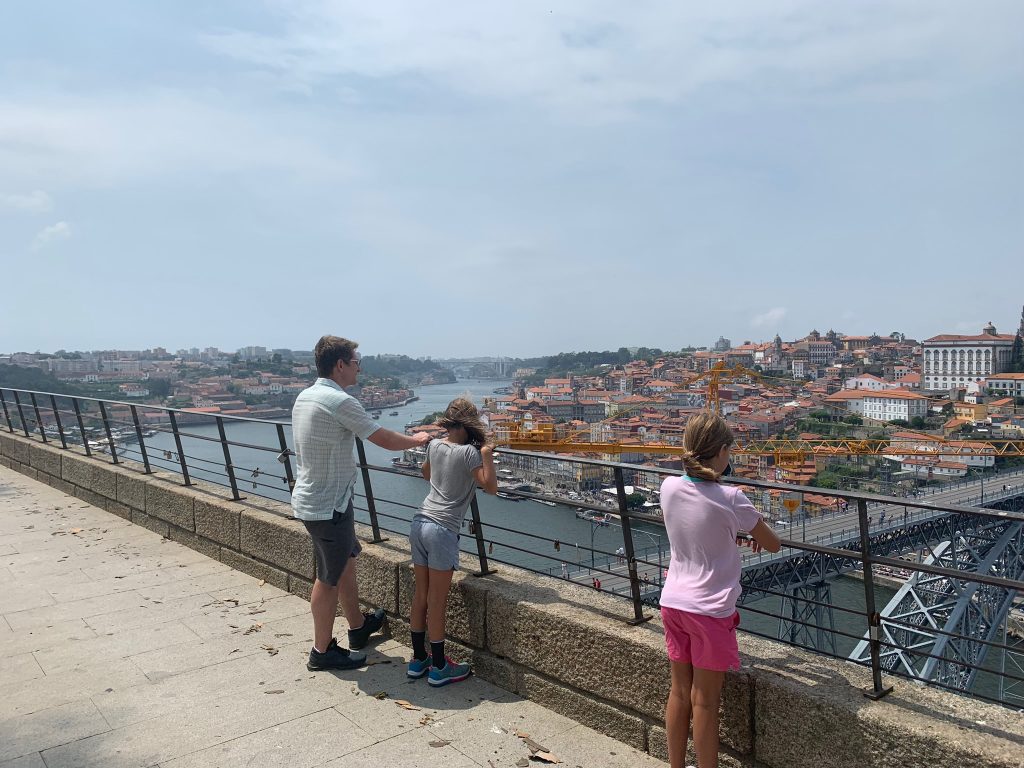
After walking across the Dom Luis I Bridge to the neighboring city to the south across the Douro River, you will find yourself in Vila Nova de Gaia—the birthplace of Port wine.
Bring your kids along with you as you:
- Take the Douro River Water taxi
- Taste port at Calém Cellars
- Ride the cable car
- Stroll along the river front
- Eat at the rooftop restaurant and take in the views, with a glass of port of course
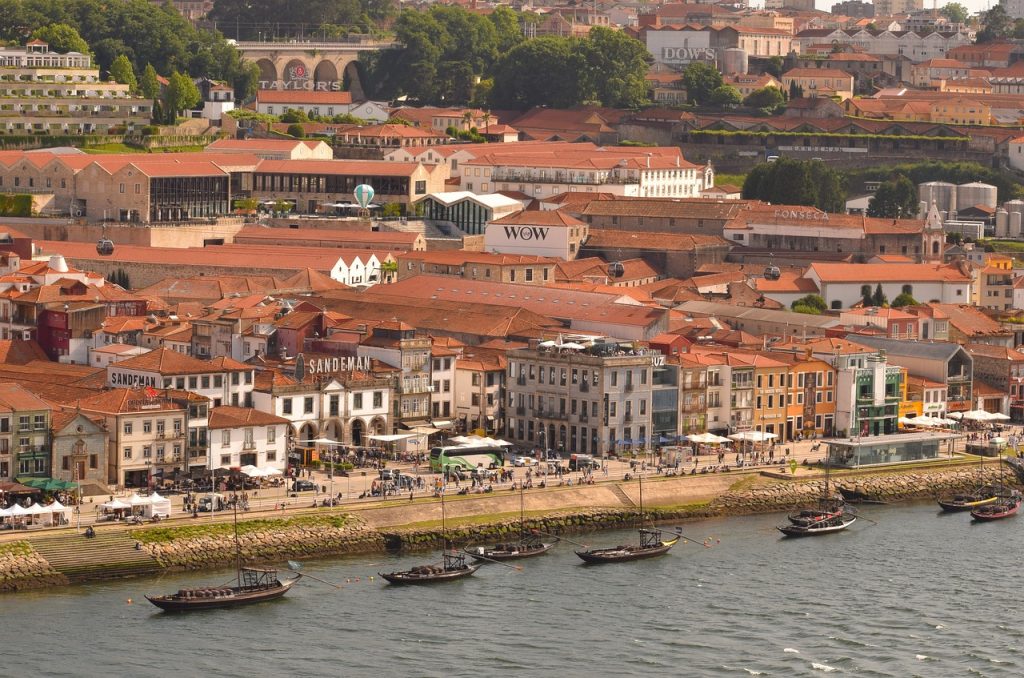
Family-friendly Activities Near Porto
If time permits, add these sights to your itinerary!
This is a pretty cool Medieval castle about 30 minutes south of Porto, and is also a National Monument. It was built in the 9th century as a defensive castle, but the indigenous people of the area may have also had a temple in the same area that preceded the castle. Tickets are €3.
It was a site of much war and conquest as different groups continued to move through Europe overthrowing empires. Restoration of the castle began in the 19th century and now you can walk around the grounds and most of the interior. It always amazes me to be around structures that have seen so much history. All of our group had fun exploring the grounds!
Unfortunately, we discovered once we were there that this castle was a little more remote and we couldn’t find an available Lyft to pick up the other half our group that wouldn’t fit in our rented car. So three of the adults (including me!) walked and carried the 6-month-old and his car seat about 30 minutes downhill to the nearest town of Feira. We were able to get help from the very kind cafe owner, drink a yummy espresso, and get a taxi to our next destination.

Espinho (about 30 minutes south of Porto) is a busier coastal town where we saw lots of people at the beach playing in the water and eating food from the food trucks. We were unfortunately unprepared for water, so that was a bit of a letdown for the kids.
After the Castelo de Santa Maria, and the unexpected splitting up of our group, we were hungry and tired. So we focused on finding a late lunch instead.
Pro tip: Many places in Europe close for a couple hours between lunch and dinner so don’t get caught stranded with hungry kids.
Somehow we ended up at Kurika, just before they closed for an afternoon break. The food was heavy on the delicious seafood, but had enough variety for our more selective family members.

It was really nice to just sit together after our adventurous day, and somehow the kids weren’t melting down. And the staff brought the adults a little drink to finish off our meal!
My parents, kids, husband, and I all decided to head out for something that promised a little hike and this was the perfect place. It had a mostly smooth path that was good for my parents and also big rocks and a stream perfect for splashing in.
Apparently this is also a popular place for mountain biking, hiking, and climbing, but it was pretty quiet on the day we went. We also made our way to the tiny capela (chapel), where you can enter halfway and take pictures of the altar within.
I didn’t know this at the time of our visit, but there is a legend of a knight that was being attacked by a hare or deer (incarnation of the devil) and was saved by invocation and protection from the Virgin Mary. Because of this you can see a flat stone with five holes that represent the four legs and snout of the deer. The knight was said to have built the chapel as a thanks for this miracle.
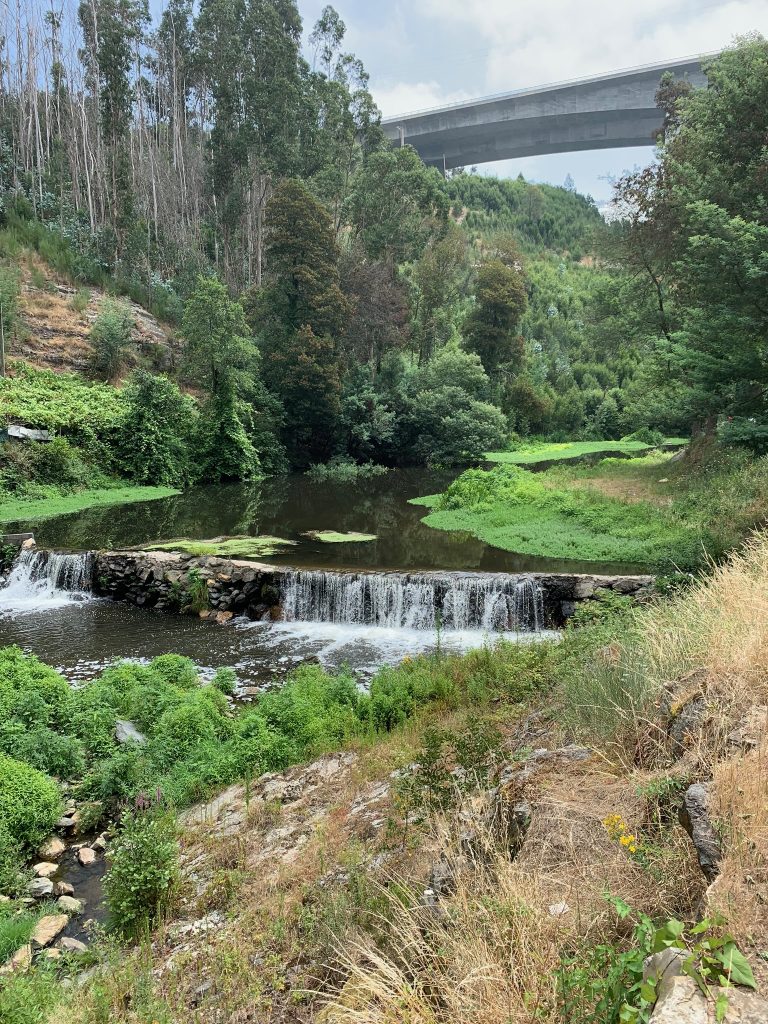
Where to Stay

Our Airbnb rental was perfect for our large multi-family needs! It was beautiful and spacious, set on many acres of a former citrus grove and oak trees. Our kids love to roam about and I’ve found that vacations go a lot more smoothly when there are enough rooms or areas for a kid or adult to get a little quiet time when needed.
Besides the house, there was a pool, tennis court, and a chapel on the far end of the property that was open on Sundays. We were also pleasantly surprised to discover there was a large grocery store with a pharmacy actually within walking distance! This is mentioned in the listing but you always wonder what “within walking distance” really means.

Antiracist Travel Considerations
History Corner:
Portugal pioneered the slave trade in the 1400’s.
Although Porto played a smaller role in the slave trade, this legacy is hard to find as it is hardly mentioned anywhere in the historical places I visited in Porto.
More of this history is starting to be acknowledged in Lisbon. Read here for more.
Our experience
My family felt safe and comfortable visiting Porto. We found most local people to be warm and welcoming, especially to my young children. I did not see many other BIPOC travelers.
Learn More
1. Read about Portugal’s efforts to acknowledge their history and the people who were forced into slavery here.
2. Follow groups like @Black.in.Portugal to learn more and support black-owned businesses
3. Ask your children about who they see while traveling, and who they don’t see.
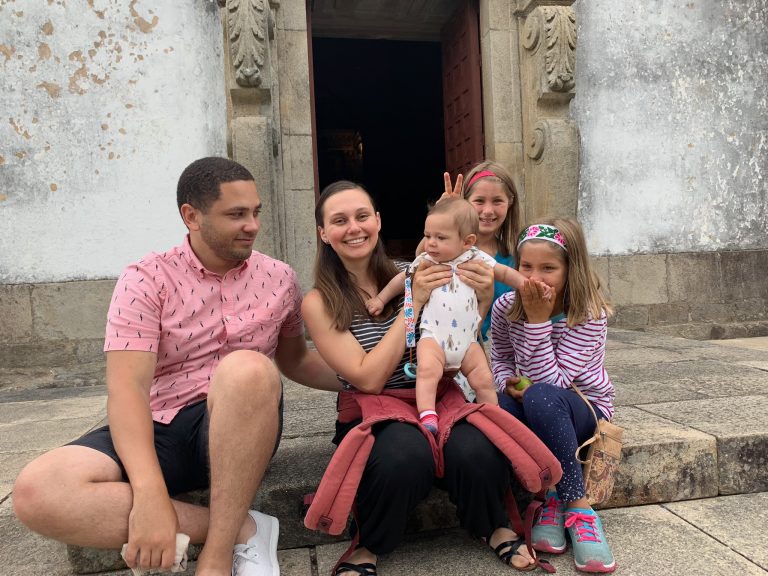
Even though we didn’t speak Portuguese, we didn’t have trouble getting around. Most people spoke English except in some of the less touristy areas. Lucky for us, my mother who joined us spoke Spanish fluently and could interpret most of the signs and also communicate with many of the locals.
Whenever we travel I try to get my kids to do a few things: learn at least the basics of the local language and encourage them to speak it, and try new local foods. Now that they are older we also talk a little about the history of the places we are visiting and where the people have come from. I am so grateful that we have the ability to travel and see amazing sites and cultures and it is very important for my kids to know how special this is.
This post is part of a Portugal travel series. Continue the adventure with Evaly & Krista here:

Evaly L
I'm Evaly Long, a mixed-race (Mexican & White) mom to twin teenage daughters and a 7-year-old son. We love traveling and experiencing other cultures, lifestyles, and foods. I feel lucky to be able to travel to wonderful places far and near, and even luckier to sometimes go with our extended family.
-
Evaly L#molongui-disabled-link
-
Evaly L#molongui-disabled-link

Krista L
I’m Krista, a mixed-race (Mexican & White) mother of one toddler and am a expecting another. Traveling locally and internationally has always been a passion of mine fueled by what the local cuisine of the area is. Feeling like a more experienced parent has led me to exploring different areas with my family and learning where my children fit into a life of adventure. I will always stop at roadside fruit stands and eat riceballs.
-
Krista L#molongui-disabled-link
-
Krista L#molongui-disabled-link
-
Krista L#molongui-disabled-link
-
Krista L#molongui-disabled-link
You might also enjoy
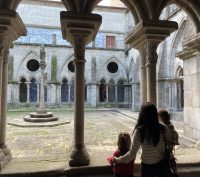 Two Days in Porto with Kids, a Hub for Culture and Family Fun
Two Days in Porto with Kids, a Hub for Culture and Family Fun
 A Family Trip to Portugal: 10 Days with Kids and Grandparents
A Family Trip to Portugal: 10 Days with Kids and Grandparents
 How to Visit Lisbon – Best Kid-Friendly Activities
How to Visit Lisbon – Best Kid-Friendly Activities
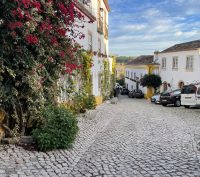 A Portugal Family Road Trip: 14-Day Itinerary of Kid-Friendly Wonders and Cultural Delights!
A Portugal Family Road Trip: 14-Day Itinerary of Kid-Friendly Wonders and Cultural Delights!
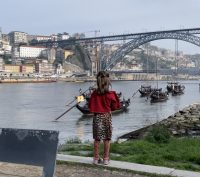 Sip and Smile: Port Wine Tasting in Gaia, Portugal with Family-Friendly Twists
Sip and Smile: Port Wine Tasting in Gaia, Portugal with Family-Friendly Twists

